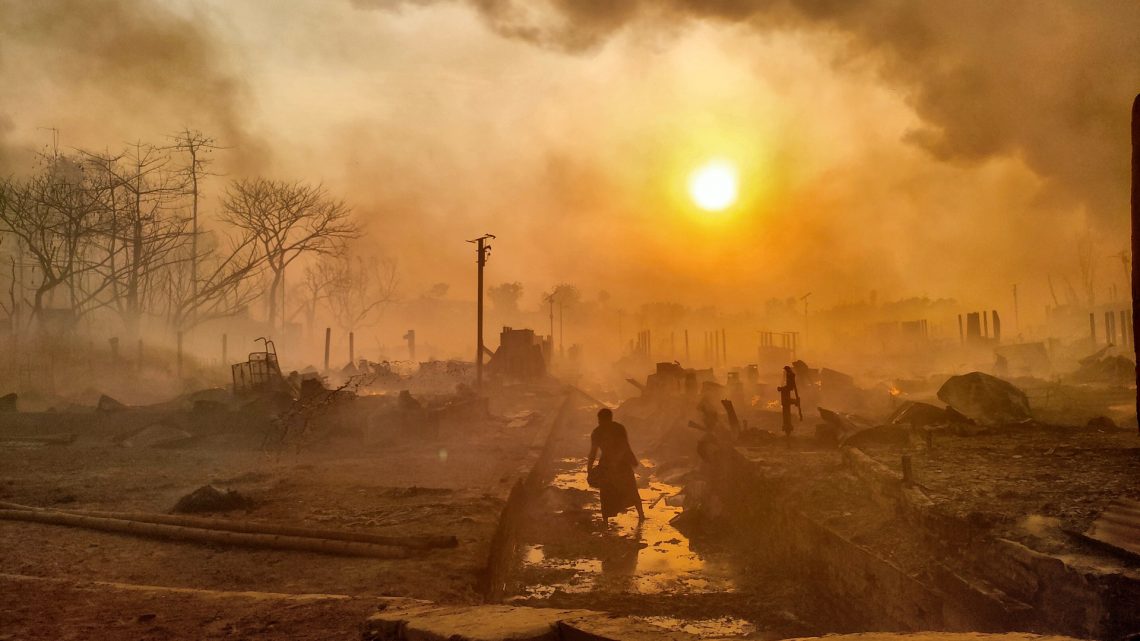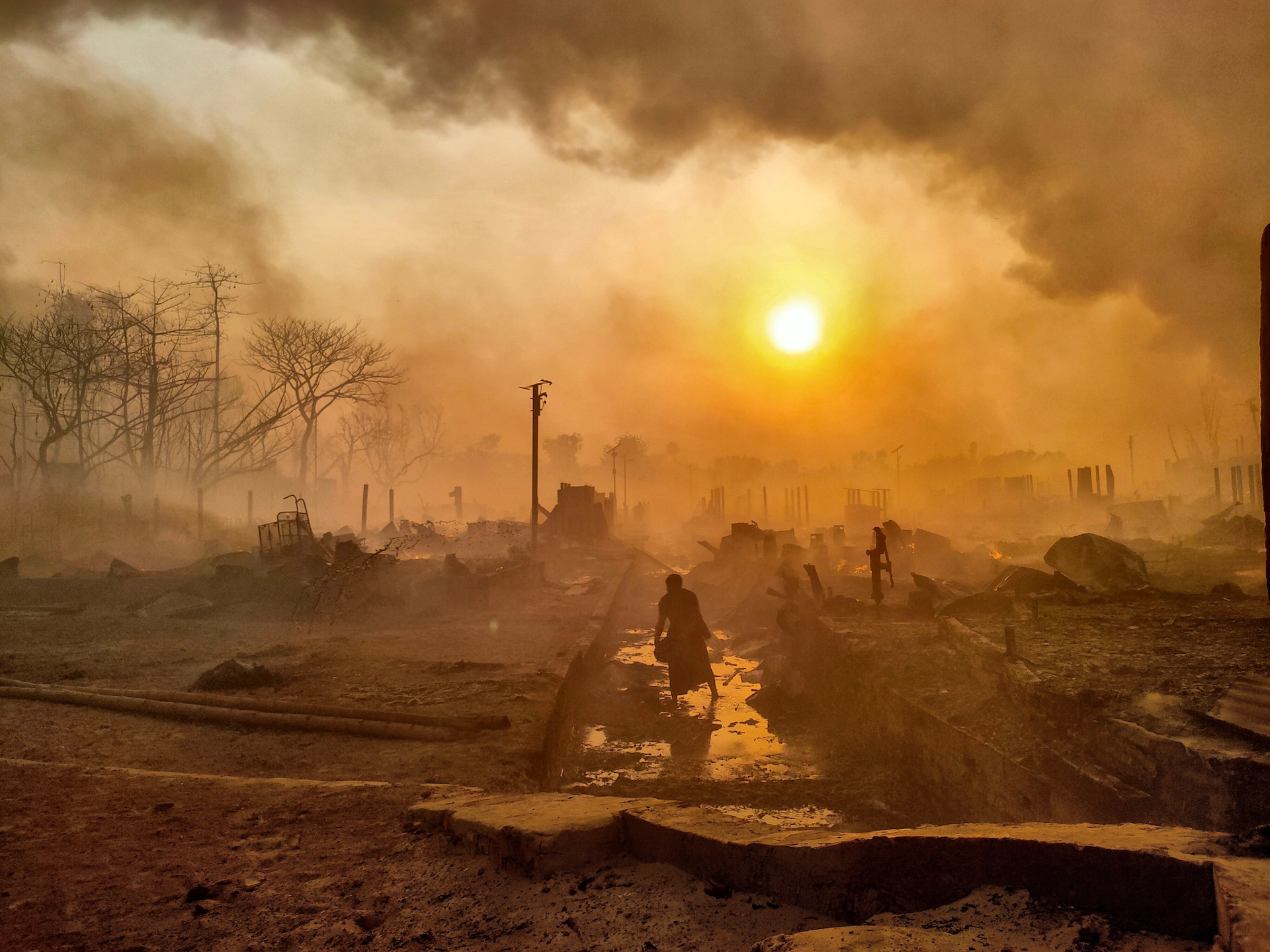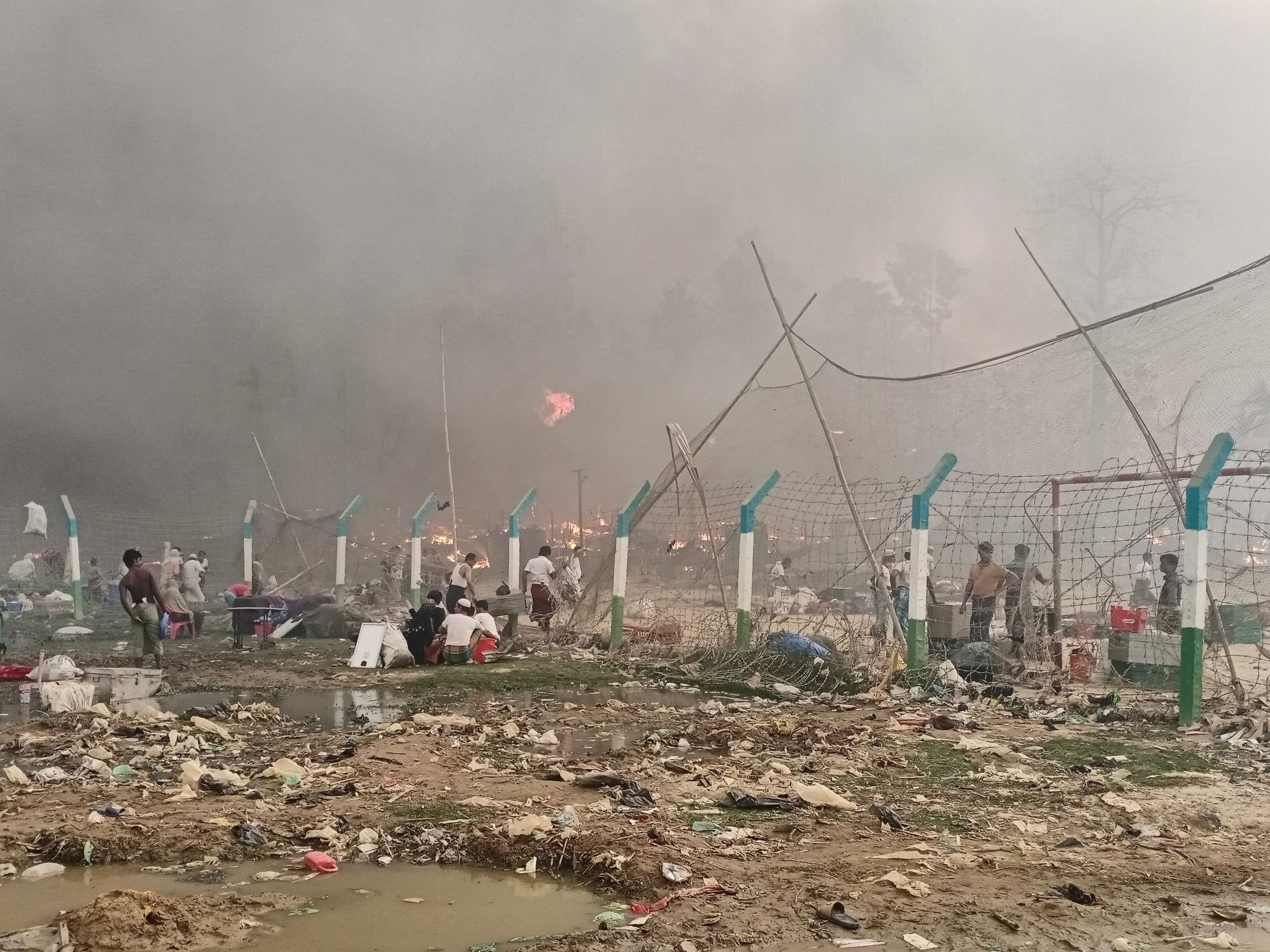
Rohingya Refugees Describe Tearing Through Fences to Escape Massive Fire
March 25, 2021With flames and smoke filling the sky, 72-year-old Rohingya refugee Abdul Hakim made it to safety by passing through a hole cut out of a barbed wire fence by kids.
“I had great difficulty when they pulled me through,” Hakim told VICE World News.
At least 15 people died in the blaze that ripped through the world’s largest refugee camp in southern Bangladesh on Monday, where more than 1 million Rohingya live after being kicked out of Myanmar in waves of violence.
The fire also displaced some 45,000 people and gutted thousands of shanties, hospitals, and schools. 400 people are believed missing.

But multiple eyewitnesses told VICE World News that the inferno was more dangerous because of newly erected barbed-wire fencing surrounding the camp that made it difficult to escape.
“Because of the fence, nobody could come to help us to put the fire out or collect our things,” said a 30-year-old Rohingya refugee named Anwara, who goes by one name. “We ran with what we were wearing,” said Anwara, adding that she lost her child for roughly 24 hours.
Pictures show a charred and blackened landscape as groups of refugees pass over cut fencing with smoke rising in the background.
“The fencing hampered the ability of refugees to escape and caused significant delays to fire services,” local and international aid agencies said in a joint statement. “The delays contributed to greater damage to the homes, learning centers and health facilities, upon which the refugees rely, particularly in one camp where everything was destroyed.”
Refugee Mohammed Alam said that when shelters went up in flames, adults could run for their lives but small children could not. “The fence is right next to our home,” he said.
Authorities are still investigating the source of the fire.
The majority of the people in the camps fled a military crackdown on the Rohingya in 2017, which was carried out with “genocidal intent”, according to UN investigators.

As repatriation efforts with Myanmar stalled, relations between the Bangladeshi host government and the Rohingya communities in the camps deteriorated. Rohingya leaders do not want to go back to Myanmar unless the government guarantees basic citizenship rights.
One Bangladeshi minister promised to “reduce the comfort of the Rohingya so that they agree to return.” Prime Minister Sheikh Hasina declared at the United Nations that the Rohingya crisis had resulted in a “health and security crisis” in the Cox’s Bazar district and constituted a “regional threat.”
Bangladesh started installing the barbed-wire fencing in November 2019. Around 80 percent of a planned 88 miles of it was put up as of January this year. The government has cited a rise in criminal activity to justify increasing restrictions on the community, including sending many Rohingya to live on an island.
Rights organisations criticised the rhetoric around Rohingya criminality and the need for “security” to justify the fences. Six days after construction began, the UN refugee agency said that barbed wire “is not always the best answer in terms of security.“
But even before Monday’s tragedy, the new fencing had affected people’s daily routines, including access to markets, clinics and hospitals. In many cases, people’s homes and shops were demolished or relocated to make way for the enclosure, according to refugees.
“The installation took no cognisance of what would make health services accessible or less accessible,” said a Rohingya refugee on the condition of anonymity for fears of reprisal.
Bangladesh denied that fences trapped refugees or hindered rescue operations during the fire.
“There were enough roads in the camps and the hundreds of our officials, policemen and volunteers were there to rescue them,” Bangladesh refugee commissioner Shah Rezwan Hayat was quoted as saying.
Follow VICE World News on Twitter.
